How to care for a domestic rat?
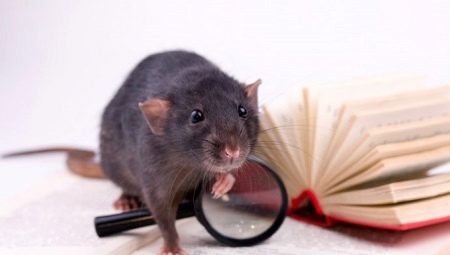
Despite numerous prejudices, the domestic rat is an agreeable pet, and caring for it is surprisingly enjoyable, easy, and fun. In addition, they are in no way inferior to cats and dogs with their attachment to the owner and intellect, if even sometimes they do not surpass them. Read all about the intricacies of keeping and caring for domestic rats in this article.
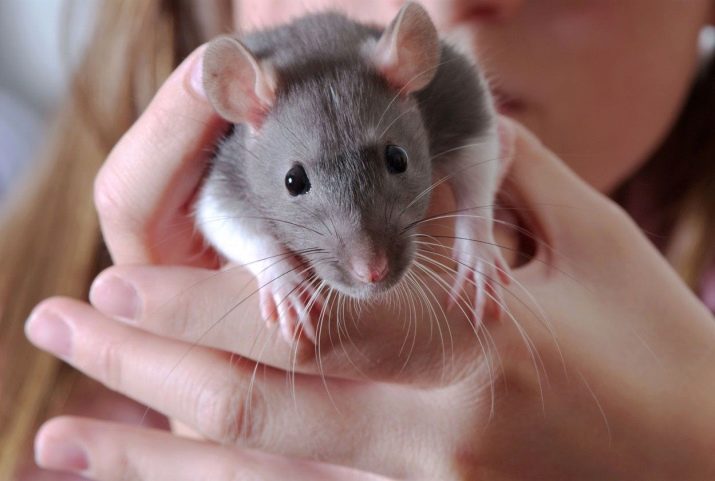
Pros and cons of content
One of the reasons why you should buy a pet rat is its intelligence. She is able to recognize the owner and distinguish between family members. Most tame rats know how to make faces and laugh, not to mention the fact that they are not only attached to the owner, but also caress him. Decorative rats are easy to keep in the apartment. It will be enough for them to arrange a cage with everything they need. They tolerate changes in temperature and humidity much better than other pets.
This animal is trainable. Of course, one should not expect high results, but domestic rats can be taught to perform simple commands, and little rats can easily learn to swim on their own. It is noticed that each rat has its own character and temperament. This cannot be called a plus, but it is quite interesting to observe the manifestation of this. Rats can be both active and lazy, with their own quirks or even eating habits.
Of the minuses of keeping the animal, one can note the fact that this rodent is a nocturnal animal. But over time, the rat can adapt to the life of the owner and lead a diurnal lifestyle.


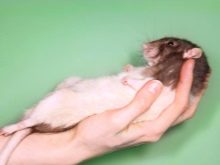
Home improvement for the rat
At home, rats can be kept in pairs, flocks or alone.Rats are polygamous, if you are not going to sell or distribute rat pups afterwards, you should not get a male and a female, and even more so put them in the same cage. Caring for cubs will complicate your life anyway, since rats are not particularly picky when choosing a mate. Male and female can contact only for the sake of reproduction. However, they are pack animals that need companionship.
Depending on how many individuals you plan to keep with you, the size of the cage, the number of toys and food depend.
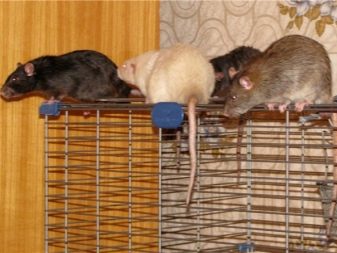
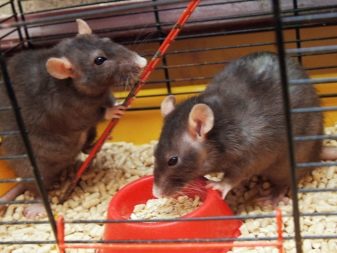
Cell
The dwelling material must be made of metal. Wooden cages for rodents have proven themselves very poorly and are practically not offered for sale. The rodent cage should be spacious. It is not recommended to purchase low cages, as some individuals like to climb the upper rods. The most common and acceptable size for a cage is 60x40x60 cm.
It is necessary to pay attention to the distance between the bars of the gratings. They should be no more than 12 mm. The rods themselves should be completely covered with enamel and not have any chips or peeling of the coating anywhere. The bottom of the cage should be smooth to minimize subsequent trauma to the pet. It is also worth taking care of a pallet with high sides so that waste does not fall on the surface of the floor or table. Collapsible cages with large doors received positive reviews.
Important! The aquarium is not the best habitat for rodents. They are likely to accumulate large amounts of carbon dioxide. Pets will feel much more comfortable in an ordinary cage.
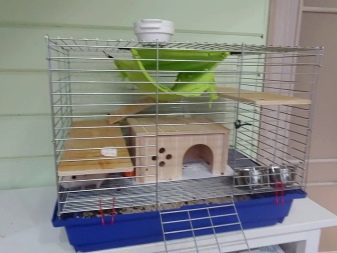


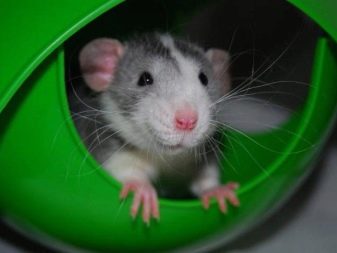
Toys
It is imperative to equip the cage with a small house. For pets, it will look like a mink in which they will hide and sleep. It is best to make the bottom soft. Another favorite place to relax is a hammock. It can be hung between the cage rods or set separately. Other useful and interesting toys for rats include various colored tunnels, bridges, wheels, swings, balls and even edible figurines.
It is recommended to purchase a nipple drinker. It is most convenient for pets and owners. When choosing between floor and hanging bowls, it is better to give preference to hanging bowls. They can be placed in both dry food and used for liquid food. The best filler is corn... Wood shavings provoke allergies, and napkins require regular cleaning. Do not use ink-filled paper as filler. She can simply poison rodents.
It is a good idea to create own mini-park for rats. To do this, you need to plant wheat in a small tray with soil. After it sprouts, you need to place it in the cage. The pet will be happy to bask in it.
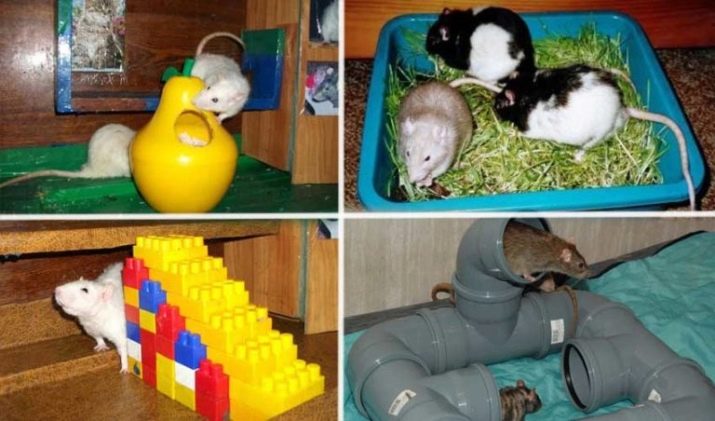
It is important to remember that the rat will gnaw all toys inside the cage, so all of them must be hard and minimally toxic. The rat chooses the toilet for itself. After carefully observing her, you can place the litter tray in the corner of the cage that she has chosen for herself.
How and what to feed?
As a rule, the requirements for feeding decorative rats are low. Rats are omnivorous, but to provide them with a healthy and nutritious diet, you still need to adhere to certain recommendations.
- Vegetables should be the basis of the diet. - they are rich in vitamins and also have a positive effect on the intestines. Good for rodents and dried fruits. The main thing is that they are natural.
- Another essential part of the diet is protein. It can be given to rats in the form of boiled eggs or meat (beef, chicken, fish) or liver (heart, kidney). Everything must be boiled in order to avoid subsequent infection with worms.
- Improve rodent health with flax or pumpkin seeds... A good addition would be wheat or oat seedlings.
- Kefir can help restore intestinal microflora, and cottage cheese - a lack of calcium. Rats actively eat watermelon and strawberries.



Prohibited foods for rodents include the following:
- kebab or any other meat with a high spice content;
- chocolate and other sweets;
- potato;
- raw beans.
Important! You can’t drink alcohol or give them raw meat. Unfortunately, alcoholic beverages have been observed to be addictive in rodents.
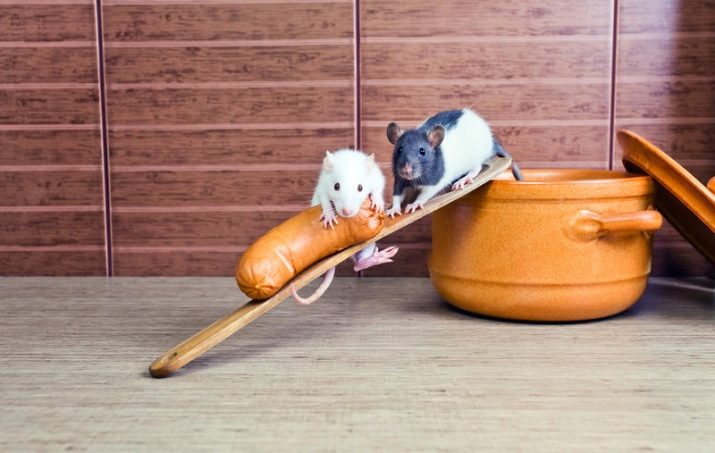
Especially it is necessary to look after and properly feed the newly-made mother-rat with the food rich in vitamins. Her diet should be rich in protein, fiber, and foods high in calcium. Sometimes it is recommended to feed the rat with ready-made dry food from pet stores. But often you cannot feed your pet with them. The bulk of the diet must remain "alive".
On average, a rodent eats almost 30 grams of food per day. A third of this volume is accounted for by vegetables. The daily water intake for rats is 60 ml.
Important! Crafts, carrots or any other hard vegetables are required for any rodents. It is about them that they sharpen their teeth. As with any animal, it is necessary for rats to acquire vitamin complexes from time to time to prevent various diseases.

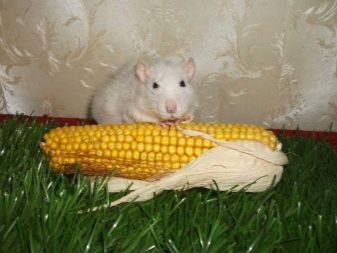
Bathing rules
Bathe rats in warm water. This is best done using shampoo. Sometimes a small brush can be used as a washcloth. Often, before or after bathing, the rat's claws are trimmed.
It is imperative to bathe the rat if it is smeared with something. It's not so scary if it is food, but if it is something inedible, then when cleansing, the rat can simply poison itself. Sometimes it is enough just to wash the rat's legs and tail. Bathing is also recommended if the rat smells bad. Most often this is due to untimely cleaning of the cage.
Important! In no case should you wash a sick rat or an individual with wounds on the body.
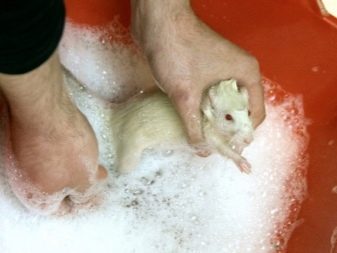
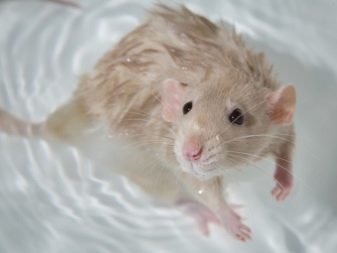
Domestic rats are quite shy, so bathing can be stressful for them. It is best to lower the rat into a container and pour water there so that it can stand with its paws on the bottom. First you need to moisten the rodent's fur, and then apply shampoo. For bathing, baby shampoo is quite suitable. You need to watch out for so that the product does not get into the eyes and ears.
It is necessary to dry the rodent by wrapping it in several towels. If the pet lives with other rodents, then you need to carefully launch it into the cage, since a different smell can cause rejection of its fellows. If the rat is healthy, then you need to bathe it once a month. (if it is a female), or combine it with wet wipes (if it's a male).
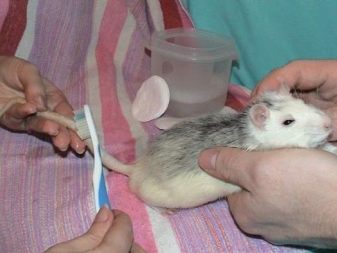
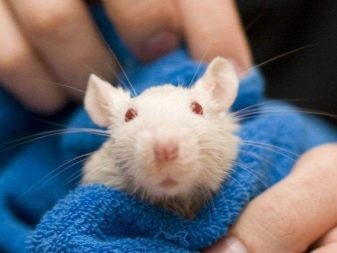
Diseases
It should be noted right away that the life span of rats is short - about two years. Under good living conditions, they can live up to 4 years. Interesting fact: the maximum age of the rat, which was officially recorded - 7 years. If you keep more than one rat, but several, then quite often there will be fights that will lead to injuries. They need to be treated.
Sphynx and Dumbo rats are quite susceptible to various diseases, because they are the product of gene mutations that later negatively affect their health. As a rule, old age for them occurs at the age of two years.
If you put a cage with pets in a draft, then the likelihood that they will catch pneumonia is very high.

Healthy rats are moderately active and inquisitive. They sniff their owner or his hands. If the rodent is too lethargic or, on the contrary, too active, then this indicates that he has health problems. When buying a rat, you should pay attention to the following points:
- scratches, wounds or sores on the legs and tail; later they can cause other more serious diseases;
- bald spots;
- suppuration on the body;
- frequent sneezing;
- a wet area around the anus is a clear sign of an intestinal disorder;
- any suspicious discharge from the eyes, ears, or even the nose.

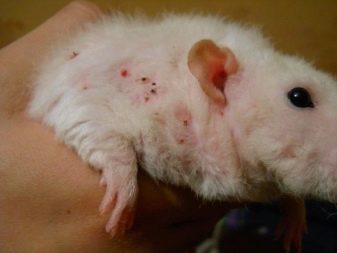

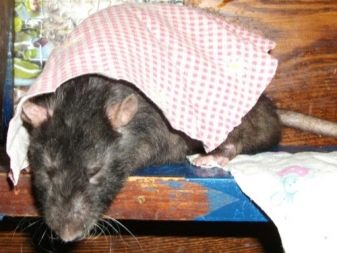
If you have at least one of these symptoms, it would be best to refuse to buy a sick animal or urgently take it to the veterinarian if it is your pet. By the way, the animal's fur can also be an indicator of health problems. If it is wet or disheveled, it means that the rodent is not feeling well.
Domestic rats differ from their wild relatives in much weaker health. The former are prone to gaining excess weight and various cancers. As a preventive measure for these diseases, it is necessary to carefully monitor the diet of pets. Separately, it is worth highlighting ticks, lice and other parasites that live on animals covered with wool. To get rid of them, it is necessary to detect the disease in time and treat the animals with special preparations.

Training
Rat training is made easier by being friendly. Individuals can be easily tamed by climbing in and out of the host's long sleeves. Rats love to swarm around in boxes and find something there. By regularly encouraging and stroking them, rats can be taught to bring some small thing or jump over obstacles.... Rodents can also easily learn to climb a rope or a hoop.
Of course, in no case should you beat pets. Such behavior towards him will not give any results in terms of training. One of the simplest tricks that you can teach a rat is to respond to your name and come to the owner, as well as stand up on its hind legs when ordered. Quite often, sunflower seeds or small pieces of fruit are used as rewards.
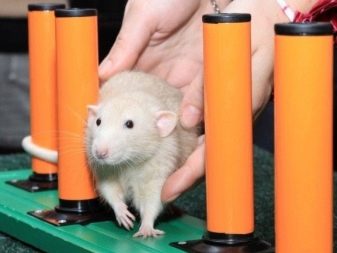
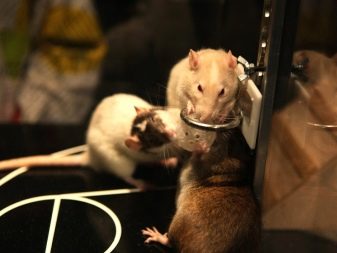
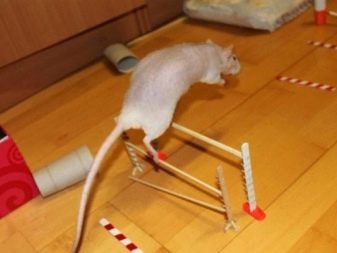

Moving away from the topic, I would like to talk about the origin of domestic rats. The 16th century, when rats filled all medieval cities, is long gone, but it is from this moment that their domestication begins. The cultivation of rats by humans reached its peak in the 19th century, when individuals were bred specifically for participation in battles. During the same period, albinos began to be used for laboratory research.
Of course, not all rats participated in battles or were experimental; some individuals remained with humans as pets. Since then, they have lived next to people, and their disposition has become more docile than that of wild relatives.
In conclusion, I would like to note that the guarantee of the health of rats is the regular and complete disinfection of the cage, as well as all the toys that are in it. In addition, everyone who has taken care of a tame rat will always want to have another one of the same animal.
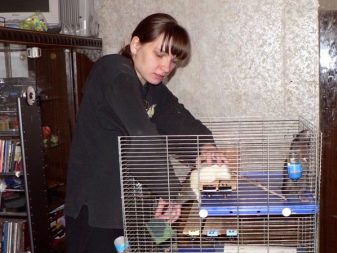
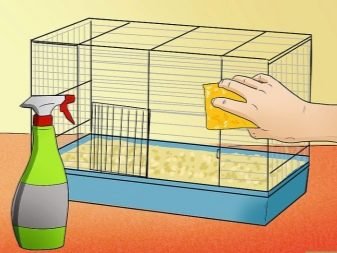
For information on how to care for a rat, see the next video.









We have two rats at home - one is just a rat, and the other is Siamese: they fight constantly. Tell me what to do.
In general, there should be enough room in the cage to accommodate a pair of rats. But sometimes the rats do not fight, but play: they can bite and push each other, but there are no traces left - then they just frolic ... It is possible to determine whether the rats are playing or fighting is possible only by the consequences. If there is blood, wounds, torn hair on the body, this is a fight, especially if the screams of rodents are heard. If there is damage after the fight, the injuries must be treated. Then the affected animal should be resettled immediately. Aggressive attitude is also given by standing on end of fur, teeth grinding, tense posture and flattened ears. In this case, the rodents should be seated in different cages and gradually accustomed to each other, otherwise the bites will be serious. When fighting, they need to be separated, while it is recommended to use a water pistol or spray gun. Two adult males should not be kept in a cramped cage, otherwise a tough struggle for housing and leadership cannot be avoided.Sometimes the rat perceives the appearance of a new individual as an encroachment on its territory, it hisses, snorts and starts to fight with the "usurper". If the smell of one of the individuals remains there, then it will defend its home from the encroachments of an opponent. If they continue to fight for supremacy for a long time, then the cage should be washed with antiseptics that eliminate odors. So that the rats do not fight, but get used to each other, it is better not to put them in one cage at once. Each house should be separate. First, they need to walk together in neutral territory. Sometimes they become friends from the first meeting, and then they can be lodged together, and sometimes they have to be allowed to communicate during walks several times a day. Usually 1-2 weeks is enough for the animals to decide to live together and decide on a leader. The rodents who continue to sort things out can be stressful, for example, take them with you on a trip to the country. The unfamiliar environment will make them stick to each other. If they want to bring together an adult rodent and a rat, then they need to be introduced on the territory of the baby. The rat will behave in a cage with a strange smell approximately, and the rat cub will behave more confidently, since it is at home.
A domestic cat catches mice in the country. Can a cat harm a rat? If, for example, she leans against the cage, can he scratch it with his paw, is it worth the risk?
Victoria, of course, can.
We have a rat, a parrot and hamsters in our family. My daughter (7 years old) saw a homeless kitten in the summer and asked him to take it home, to which I gave a categorically negative answer. After explaining to the child the reason for the refusal, the kitten was placed in the good hands of our neighbor. I don't understand people who have pets from the food chain (cat is a predator and rats / hamsters / birds are food). Many will say that they can be friends, etc. But if you are put in a cage, and a lion is walking around freely and hunting you, I think the sensations will not be pleasant.
We have a cat, she is already 2 years old, and when my daughter asked for a rat, I bought it too. Now the cat plays with the Rat and does not even think about anything bad. Rats are crawling on it, and she doesn't even lead a whisker ...) And we also have 2 parrots and a guinea pig, so the cat does not pay any attention to them. And once a street cat wandered into our house, he grabbed one parrot and dragged him out into the street, we never saw the parrot again ... (
Hello! The fact that your cat is friends with animals is good, but watch carefully so that the cat does not injure the rat. When playing with relatives, cats release their claws, and teeth are also used. The cat can accidentally injure the rat.
My cat and hamster played quietly without any bad intentions.